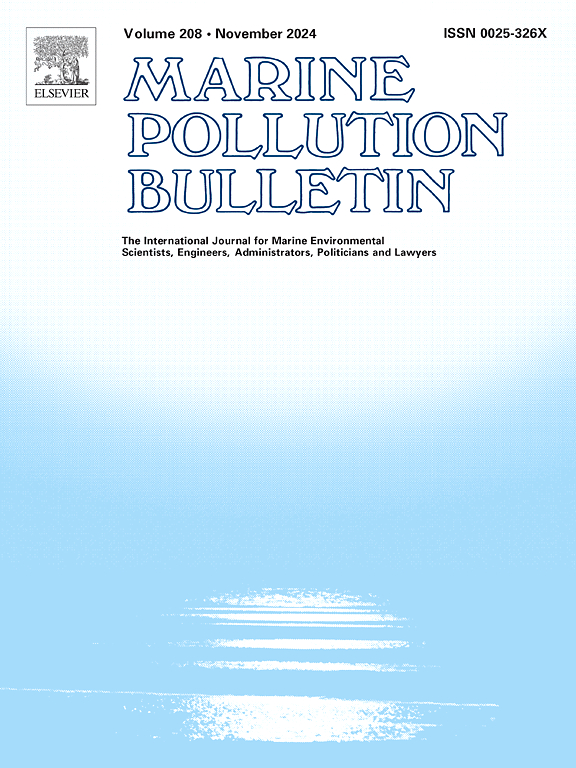Advancing star: A revised protocol for assessing the ecological status of coralligenous cliffs
IF 5.3
3区 环境科学与生态学
Q1 ENVIRONMENTAL SCIENCES
引用次数: 0
Abstract
The STAR protocol was recently proposed to standardise sampling methods for assessing the ecological quality of coralligenous cliffs through the three indices ESCA, ISLA and COARSE. In this paper, a revised version of the STAR protocol was proposed to enhance its robustness and effectiveness. Compared to the previous one, this new proposal includes the use of video transects for a more accurate assessment of erect anthozoans, the development of a new ESCA (n-ESCA) index independent of the encrusting coralline algae and integrated with the ISLA index, and the creation of the IICA index calculated averaging n-ESCA and COARSE. The new STAR protocol was applied to 28 sites in the western Mediterranean Sea and the ecological status obtained from all the indices (ESCA, ISLA, COARSE, n-ESCA, IICA) were compared to the human pressure levels calculated by an anthropization index. The n-ESCA showed a stronger correlation compared to the ESCA, COARSE and ISLA indices, indicating a better response of this new index to anthropogenic pressures affecting the investigated coralligenous. Moreover, the correlation obtained for the IICA was stronger than that showed individually by the n-ESCA and COARSE indices, further supporting the advantage of integrating multiple ecological descriptors for a more comprehensive evaluation. The advanced STAR protocol overcome the constraints emerged over several years of large-scale application of the previous version, offering a more robust and sensitive tool that can effectively capture both fine-scale and broader ecological changes in coralligenous habitats.
求助全文
约1分钟内获得全文
求助全文
来源期刊

Marine pollution bulletin
环境科学-海洋与淡水生物学
CiteScore
10.20
自引率
15.50%
发文量
1077
审稿时长
68 days
期刊介绍:
Marine Pollution Bulletin is concerned with the rational use of maritime and marine resources in estuaries, the seas and oceans, as well as with documenting marine pollution and introducing new forms of measurement and analysis. A wide range of topics are discussed as news, comment, reviews and research reports, not only on effluent disposal and pollution control, but also on the management, economic aspects and protection of the marine environment in general.
 求助内容:
求助内容: 应助结果提醒方式:
应助结果提醒方式:


